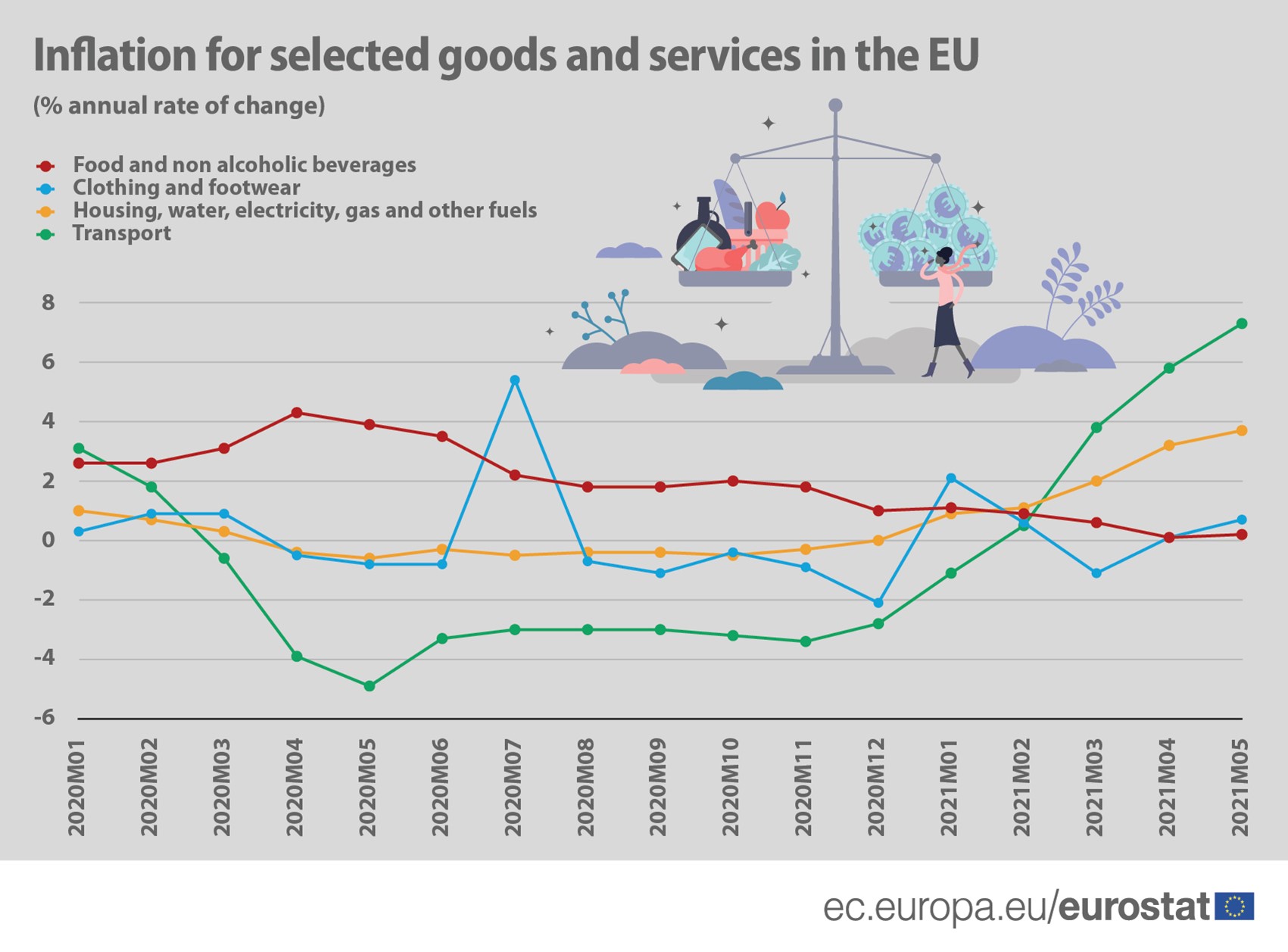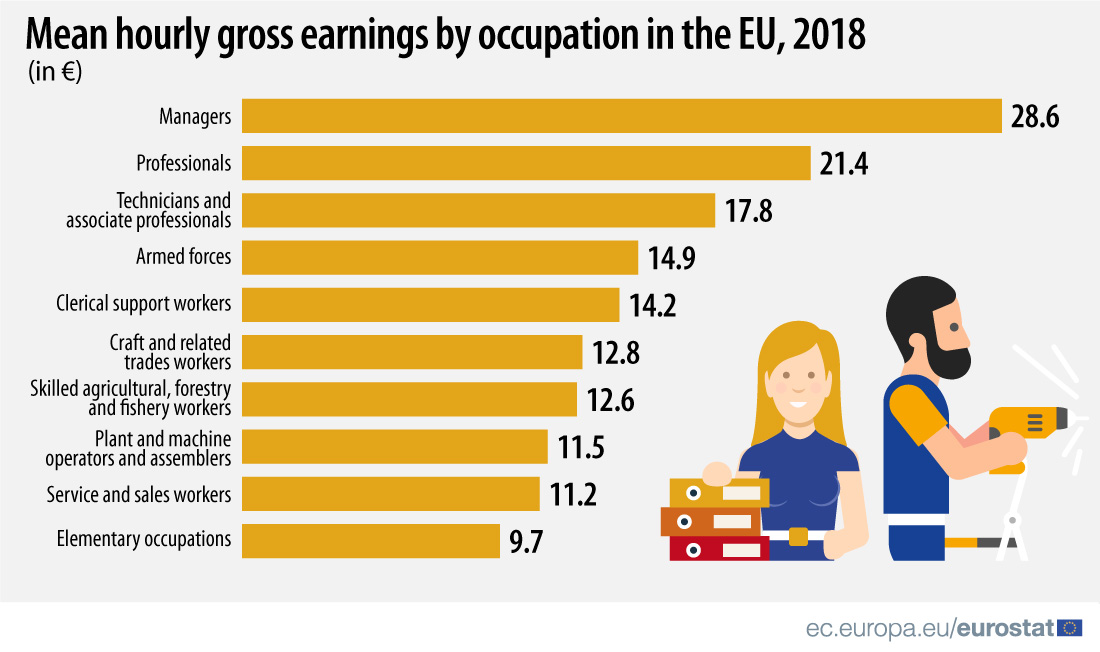In May 2021, the euro area annual inflation rate was 2.0%, up from 1.6% in April, while the European Union (EU) annual inflation was 2.3% in May 2021, up from 2.0% in April.
Statistics
The share of 'early school leavers,’ a term that refers to early leavers from education and training (aged 18-24), has steadily decreased in the European Union (EU) over the last 10 years (from 13.
The European Commission has released the European Innovation Scoreboard 2021, which shows that Europe's innovation performance continues to improve across the EU.
The first estimate for euro area exports of goods to the rest of the world in April 2021 was €193.8 billion, an increase of 43.2% compared with April 2020 (€135.3 bn), which had beenheavily affecte
In the first quarter of 2021, seasonally adjusted GDP decreased by 0.3% in the euro area and by 0.1% in the EU compared with the previous quarter.
Volume of retail trade down by 3.1% in both euro area and in the EU
Up by 23.9% and 22.4% compared with April 2020
The annual mean concentration of fine particles (PM2.5) in urban areas of the EU has been gradually decreasing to 12.6 μg/m3 in 2019.
In 2020, there were 195.4 million households in the European Union (EU). Almost one-third of these households (29%) had children living with them.
Gross hourly earnings vary considerably across occupations. Based on detailed earnings data for 2018, managers were the best-paid occupation in all EU Member States.
One-fifth (20.3%) of employees born outside the EU were employed on a temporary contract in the EU in 2020, compared with 13.8% for temporary employees born in a different EU Member State and 11.8%









